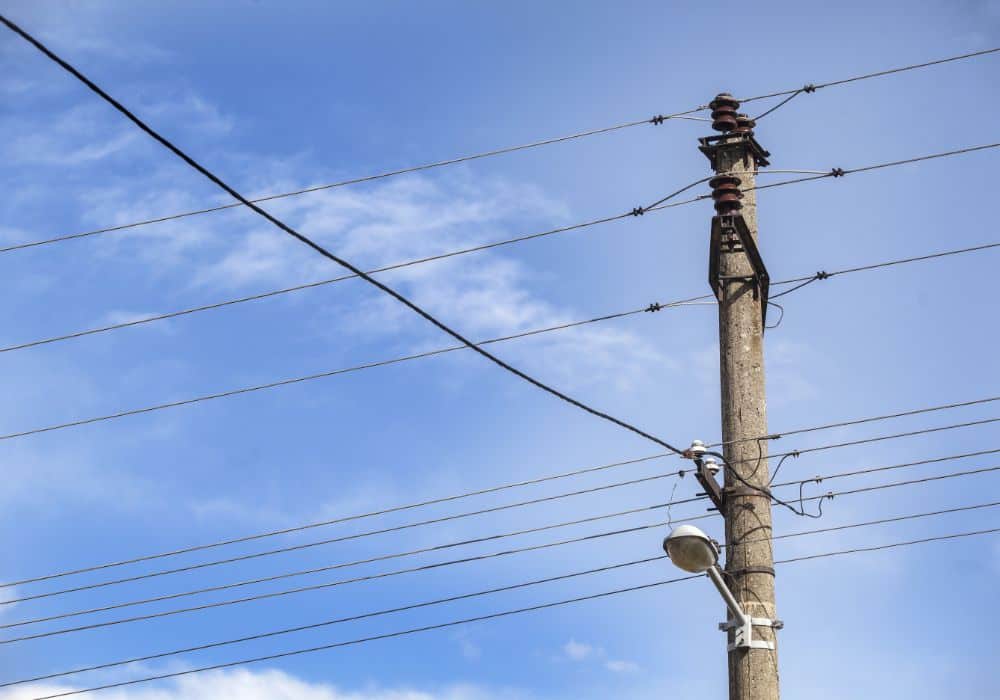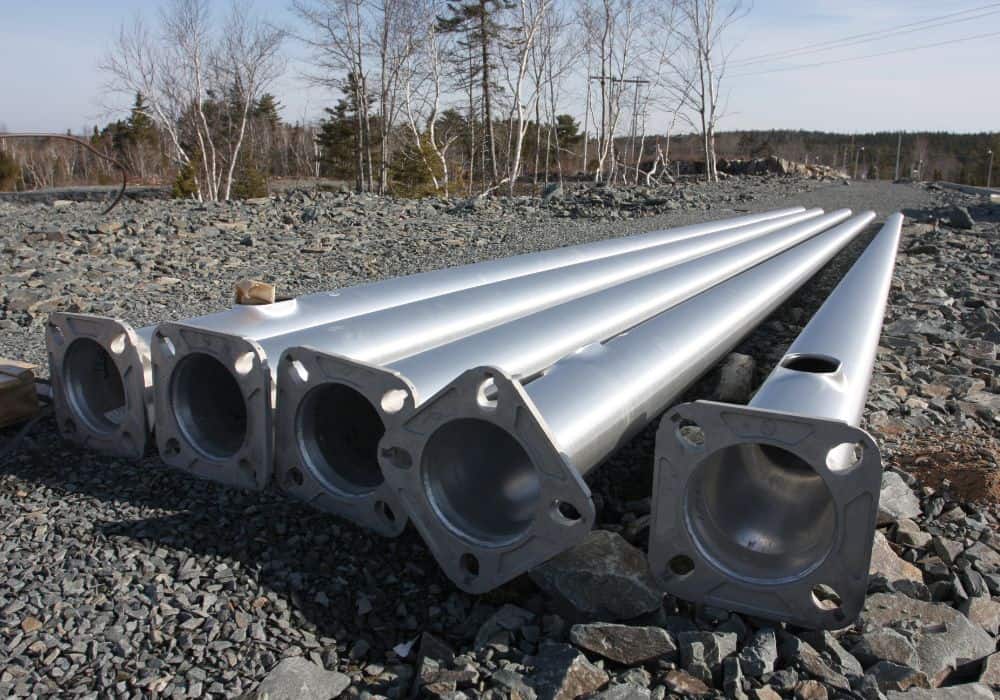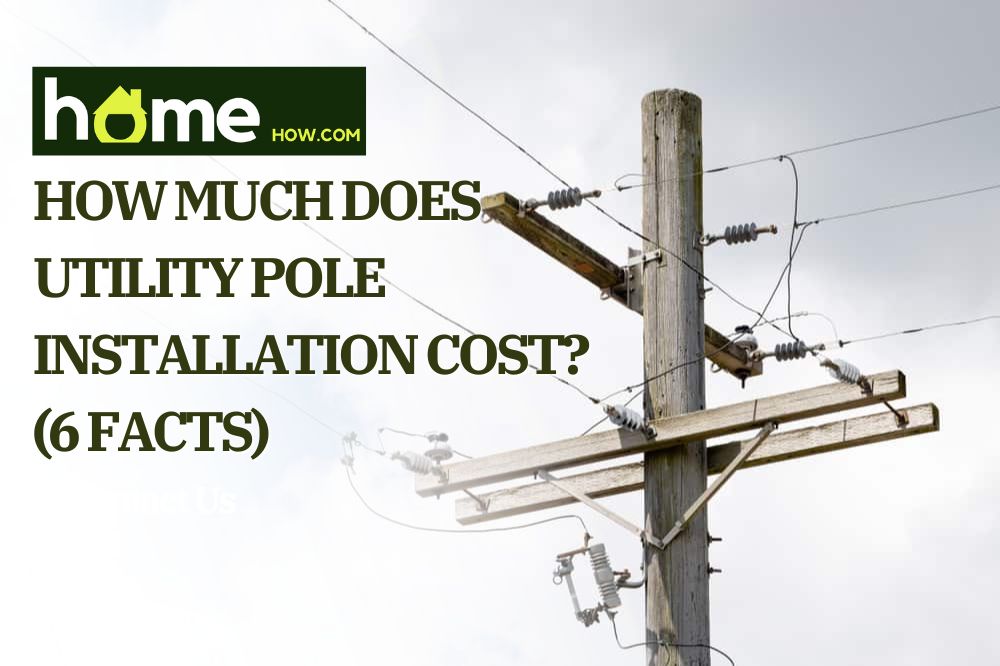If you are starting a new building project, one of the key areas is the installation of utility poles. These poles do not typically appear in cities, so you will likely build in a rural area if you need a utility pole. However, it is not easy to get and install one, especially if the construction is indeed in a rural area, and one of the hindrances is the cost.
How much does the utility pole installation cost? You may spend a minimum of $300 or as much as $1800 to buy the pole, but this is not a one-size-fits-all issue. The cost range shows a large maneuvering room because several factors play a vital role in how you spend.
Moreover, this cost may not cover the overhead electricity wires from the utility company to your location. These factors can raise the installation cost to $10,000. Sometimes, the installation cost may be as high as $13,000.
How Much Does Utility Pole Installation Cost?
You must check the local laws and contractors to determine the cost implication for your area if you need to install a utility pole. One of the vital factors is the area you live. The cost does not apply to every state, city, and town, so you may find that the cost for this installation in your area is higher than expected.
The cost may vary due to the distance from the utility company to your area. The farther your project is from the company, the more you may have to spend because of the length of wires involved. Also, the geology and terrain of the area may affect the cost, together with the other labor implications and equipment for the job.
Installing a Utility Pole: What It Involves

There are different aspects to installing a utility pole that you must consider before arriving at a good estimate. Let’s look at each aspect and how they affect the installation cost.
1. Pole Type
Before installing a utility pole, you must choose the type to use. Companies use three main types of utility poles: wood, composite, and steel. Each has its pros and cons, and the one used for your project depends on your budget, location, and how the elements and rodents will affect it in the long run.
- Steel Utility Poles
You will find steel utility poles at $300, depending on where you buy them. Also, some contractors may sell them for between $500 and $1000. A steel pole has many excellent qualities, one of which is that it has little or no carbon footprint.
In other words, manufacturing does not cause greenhouse gas emissions. Also, unlike wooden poles, there is no bio-dome forestry disturbance when manufacturing steel poles. So, steel poles are eco-friendly and well-liked by utility companies.
However, they tend to be more expensive than the other options and can become dangerous. The reason is that they are dangerous electricity conductors; a loose overhead cable can touch the pole and weaponize it.
- Composite Utility Poles
These power poles are common, and manufacturers mass-produce them. Some utility companies may opt for them because of their ease of use and accessibility. The poles last long, and you may never have to replace them. All you may need to do is inspect and maintain them, although these cost money.
But they are not necessarily affordable and can cost more than wooden poles during installation. Also, they have a low mass-to-energy absorption rate, which makes them unfit for use as utility poles in areas close to forests or major roads.
- Wooden Utility Poles
Installing a wooden utility pole typically costs between $700 and $3000. This cost may be higher than your budget, but you must understand what it takes to install this pole and how much more beneficial it is than other types.
Wooden poles are easily accessible and easy to handle. Wood has an excellent mass-to-energy absorption rate and is a good insulator of electricity. While this type of utility pole does not usually last long, companies prefer to use it over the other types. However, it is prone to decay, does not withstand fire, and can be damaged by rodents.
2. Transportation

The next step after selecting the utility pole is moving it to the installation site. Typically, these poles are long, with none less than 20 feet high. Some may even be as high as 120 feet. Transportation can be tricky, especially if you try moving it yourself to cut costs.
But if the local utility company is to deliver the pole, you must consider the size of the pole. Also, check the length, distance to the installation site, and possible permits to transport it, which may involve extra costs. Depending on the transporter and installer, you may spend as much as $100 to move it.
3. Weight
Long poles can weigh a lot, especially wooden poles. For example, an 80-feet cedar utility pole may weigh as much as 4600 lbs. Whether or not you transport it yourself, you must consider this weight and the distance to go. Also, the city or town from where you move may have varying restrictions on moving heavy ad long items.
So, you will need permits to ensure compliance, which may cost money. Allowing the utility company or any delivery company may cost more than delivering it yourself, but ensure you add the delivery charges to the total installation budget.
4. Labor
Buying and moving the utility pole to its installation destination is only one step of the project. You must think about the labor cost in different aspects. One is raising the pole and balancing it inside the hole where it will stand. The pole type, length, and weight also affect the labor cost.
However, companies that install these poles have equipment that expertly lifts and puts them in the holes. They are the best option for these pole installations instead of taking up the task yourself, whether you are using it as a telephone pole or for electrical wiring. Of course, the soil in the area and the geology will also determine the cost.
5. Requirements

The soil condition in the installation area is vital to how much the work will cost. Compact soil is usually difficult to break. The same is true for areas with concrete floors. If that is the case, digging a hole deep enough to hold a long and heavy pole will take longer.
Another important requirement is the depth of the hole. You must check the pole’s weight and length before determining the depth. Note that each height and corresponding weight will require different depths. So, an 80-foot pole with its corresponding weight will need a deeper hole than a shorter and less heavy pole.
Additionally, the weight the pole will carry, whether electricity or telephone wires, will determine the type, size, and hole size. Some poles carry as much as 2500 lbs, so you will need a big pole if the weight of the tip load-bearing is high. Electrical inspections must ensure you comply with the laws.
6. Number of Poles
Installing one utility pole may not cost so much, but installing more than one pole can significantly increase the cost. Installing a single pole may not require contacting the electric company in your area, but multiple installations may need the electric company.
There is no hard and fast rule, but these electric companies may charge the installation cost per pole. That means charging for labor, transportation, and other installation factors instead of charging a general fee. This will significantly increase how much it costs to install the poles.
What Makes Utility Poles Expensive?
Different factors affect the price of a typical utility pole. Apart from the installation aspects already discussed, manufacturing these poles affects their cost. For example, manufacturing a wooden utility pole takes a lot more than it does to make a composite, steel, or concrete pole.
Here is why: you must harvest the right tree because not every tree can make a good utility pole. The tree must be high and wide enough to cover the basics of a utility pole. Also, it must be straight enough to accommodate usage, and not every tree can boast of this.
There is also the harvesting aspect. It takes special skills and concentration to cut down a tall tree without damaging the trunk. These may translate into high costs, which affect your budget for installing the pole.
Companies do not use these poles as they are; they must prepare them to get the right dimensions and finish. They must also add preservatives to keep them from premature damage by water, rodents, or insects. Then, the poles must move the retailers, which means extra transportation costs.
Conclusion
Installing a utility pole costs a lot of money. The pole alone does not cost so much, but labor costs, transportation, location, and other factors increase the overall cost. It is best to hire professionals to install the pole due to the complexity. Also, choose the right pole type with your location and electricity or telephone needs.
